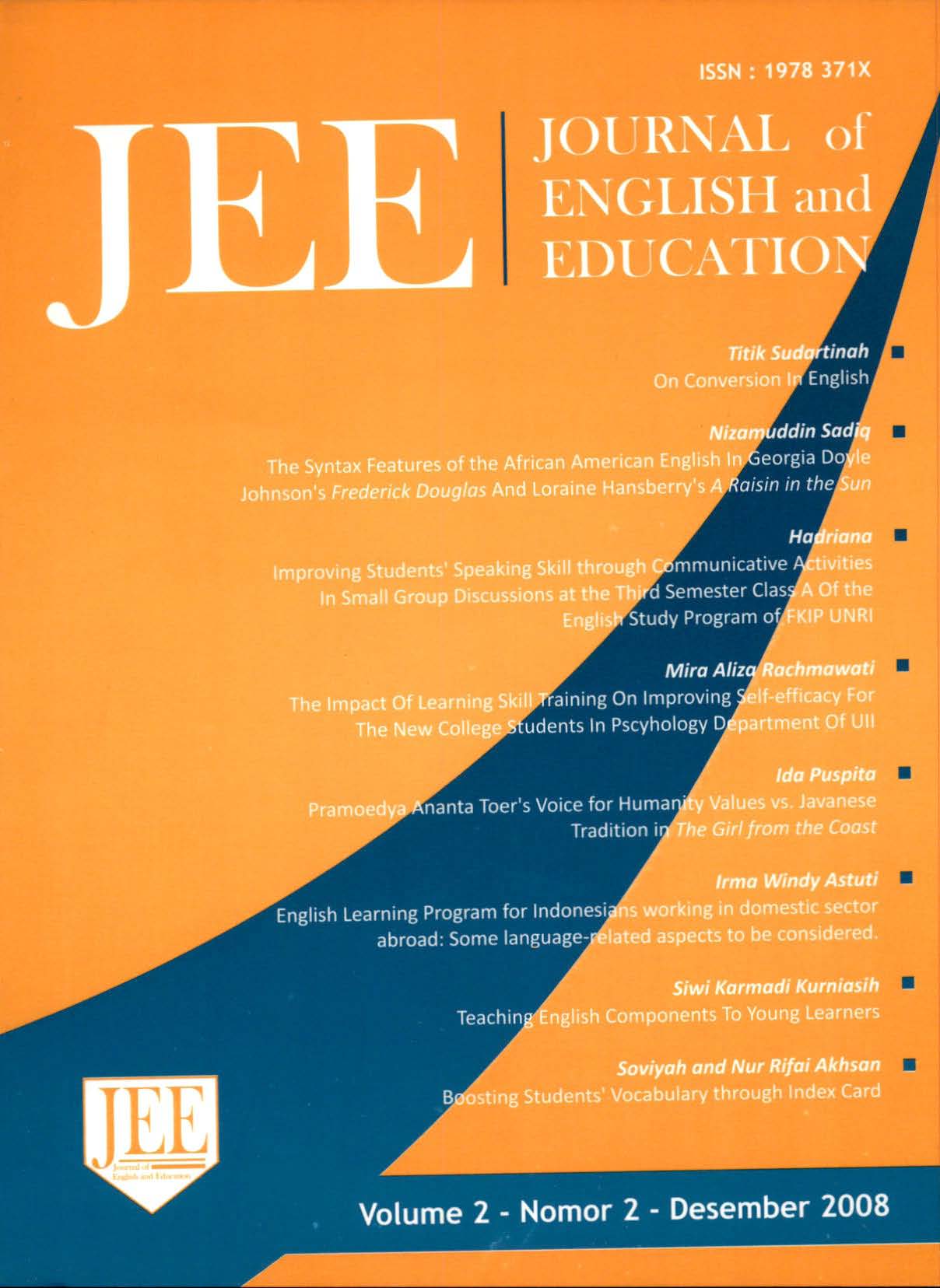Main Article Content
Abstract
Teaching English for children requires thoughtful considerations of what and how to teach. It needs full considerations such as what components of the language should be taught, what method should be applied, and what teaching technique should be employed.
Teaching English components i.e. grammar, vocabulary, and pronunciation, a teacher must take the nature of children learning into account. Teaching vocabulary, teacher should plan and organize the material to learn carefully. Concrete objects should come before the abstract ones. Teaching vocabulary is not only about teaching words as separate units but formulaic chunks. In addition, teaching strategies play an important role in children's learning success.
Learning grammar is closely related to learning vocabulary. When children learn vocabulary through learning formulaic chunks, the teacher can discuss the grammar too. One important thing that teacher should bear in her mind is that the opportunity to use the language in a meaning-focused situation is as important as learning the grammatical patterns.
The other language component to learn is pronunciation. As the other components, teaching pronunciation to young learners also need thoughtful consideration. Normally native speakers say an expression in blended sounds. They will not say each word clearly as separate unit. Hence, teachers should drill students to say expressions and guide students to feel and experience saying them in normal and natural way.
Keywords
Article Details
Copyright (c) 2016 JEE, Journal of English and Education

This work is licensed under a Creative Commons Attribution-ShareAlike 4.0 International License.
Authors who publish with this journal agree to the following terms:
- Authors retain copyright and grant the journal right of first publication with the work simultaneously licensed under a Creative Commons Attribution-ShareAlike 4.0 International License that allows others to share the work with an acknowledgment of the work's authorship and initial publication in this journal.
- Authors are able to enter into separate, additional contractual arrangements for the non-exclusive distribution of the journal's published version of the work (e.g., post it to an institutional repository or publish it in a book), with an acknowledgment of its initial publication in this journal.
- Authors are permitted and encouraged to post their work online (e.g., in institutional repositories or on their website) prior to and during the submission process, as it can lead to productive exchanges, as well as earlier and greater citation of published work (See The Effect of Open Access).

